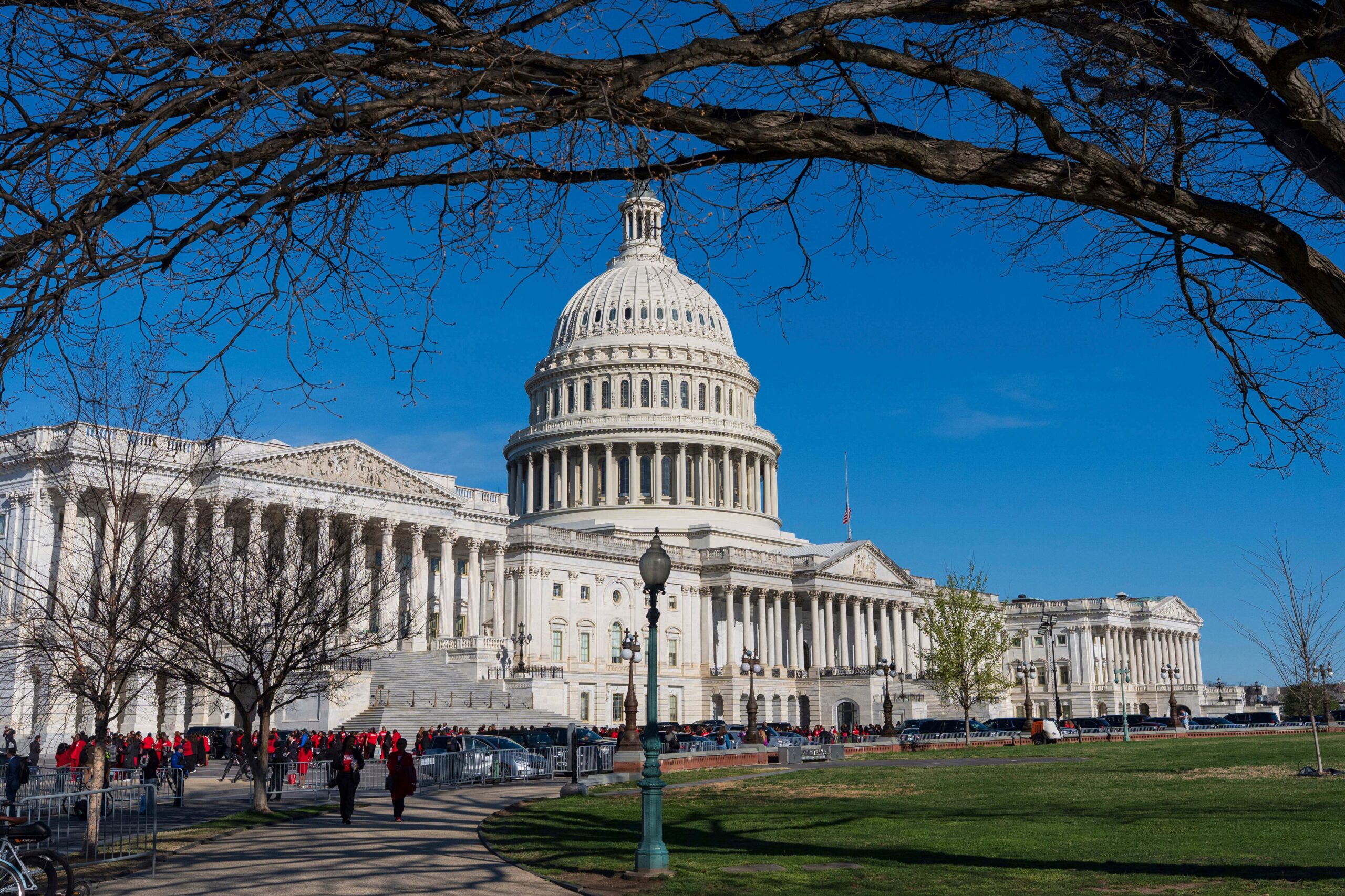By Joey Cappelletti, Kevin Freking, and Lisa Mascaro, Associated Press
Washington A Republican senator stood on the chamber floor only hours before a contentious, almost midnight vote on President Donald Trump’s package of tax incentives, spending cuts, and more money for deportations, pleading with those who opposed the proposal to read the law.
Senate Democrats accomplished just that following Saturday’s dramatic 51-49 roll call.
Having failed to halt the 940-page bill’s progress by Trump’s July 4th deadline, the congressional minority party is utilizing all available resources to postpone and prolong the process.
The Senate was more than halfway through the clerk’s reading of the foot-high bill by Sunday noon, when it rounded its 12th hour. The hours were not yet over.
Senate Democratic Leader Chuck Schumer of New York stated following the vote that Senate Republicans are rushing to pass a radical plan that was made public in the middle of the night in the hopes that the American people won’t grasp what’s in it. Democrats will force this chamber to study the entire measure if Senate Republicans refuse to inform the American people of its contents.
The glacial pace foreshadows challenging days to come.
Though there is still a long and politically risky road ahead to deliver the law to Trump by the Friday holiday, Republicans, who control the House and Senate, are getting closer to passing Trump’s centerpiece domestic policy package.
Republicans are still hesitant to cast ballots, and because of their small majorities, their leaders hardly have any extra space. In essence, assuming every member is present and voting, they can afford three dissidents in the Senate, which has a 53-47 GOP advantage, and roughly the same number in the House. His colleagues had been ordered home for the weekend by House Speaker Mike Johnson, R-La.
Trump maintained the pressure on lawmakers to complete, even if he occasionally gave them leeway in his timeline. However, the stressful situation, which saw voting stall for over three hours, allowed the internal strife to be publicly displayed.
Sen. Rand Paul of Kentucky and Sen. Thom Tillis of North Carolina, both Republicans, ultimately joined the 47 Democrats in opposing the motion to proceed. Trump took note.
Concerned that Medicaid cuts would deprive many people in his state of access to healthcare, he threatened to run against Tillis. According to a recent analysis by the then-nonpartisan Congressional Budget Office, the Senate version of the bill would create 11.8 million more uninsured people in 2034.
On Sunday morning, Trump persecuted Tillis once more, accusing the senator of harming the wonderful people of North Carolina.
Despite a string of political and policy losses, Republicans are using their majorities to oust Democratic opposition. Proposals to cut spending on food stamps, Medicaid, and other programs in order to help pay for the extension of almost $3.8 trillion in Trump tax breaks have not been supported by all GOP senators.
At the Capitol in Washington, Thursday, June 26, 2025, Senate Majority Leader John Thune, R-S.D., leaves after receiving a confidential briefing on President Donald Trump’s guided strikes on Iranian nuclear facilities over the weekend. (Photo by Rod Lamkey, Jr., AP)AP
Elon Musk, who denounced the law as completely harmful and insane, renewed pressure to oppose it.
The bill would go back to the House for one last vote before it could make it to the White House if the Senate could approve the package in the coming days. Nearly all of their members will need to support GOP leaders.
Tax breaks and core GOP priorities
Fundamentally, the bill would extend many of the tax benefits from Trump’s first term that would otherwise expire by the end of the year if Congress does nothing, potentially raising taxes for Americans. The package would dedicate $350 billion to national security, including Trump’s massive deportation goal, and offer new advantages, such as no tip taxes.
However, there is also discontent among Republicans at the reductions to green energy investments, food stamps, and Medicaid. The environmental rollbacks would be a death sentence for America’s wind and solar industry, according to Sen. Ron Wyden, a Democrat from Oregon.
Republicans are depending on the cutbacks to make up for the lost tax income, but some members believe the cuts are excessive, especially for Medicaid recipients. Conservatives, meanwhile, are calling for more drastic cuts because they are concerned about the country’s debt.
Democrats can t filibuster, but can stall
Instead of needing 60 votes to overcome opposition, the Republicans may force the package through the Senate with a simple majority vote by using a congressional procedure known as budget reconciliation.
Democrats in the minority must find alternative ways to voice their concerns if they are unable to use the filibuster.
The first is reading the entire legislative language, which has been done before. Sen. Ron Johnson, a Republican from Wisconsin, compelled a reading of a COVID relief plan in 2021.
The Democrats also intend to make use of their entire allotted ten hours of debate time, which is scheduled to begin later on Sunday.
At the Capitol in Washington, Friday, June 27, 2025, Senate Minority Leader Chuck Schumer, D-N.Y., provides reporters with an update as Senate Republicans strive to move President Donald Trump’s comprehensive domestic policy plan forward. (Photo courtesy of J. Scott Applewhite)AP
Depending on the hour, the Democrats are then ready to put out dozens of amendments to the package that would be discussed during an all-night or all-day vote session.
A roll call full of drama
Sen. Lisa Murkowski, R-Alaska, was the focus of intense conversation among GOP leaders as Saturday’s vote count teetered. She cast a yes vote.
Holdouts Sen. Cynthia Lummis of Wyoming, Mike Lee of Utah, and Rick Scott of Florida were summoned to Majority Leader John Thune’s office shortly after. JD Vance, the vice president, jumped in. The conversations continued.
Vance then ushered everyone back in to cast their votes.
“We all want to get to yes,” Scott added after claiming to have met with the president.
According to Lee, the group held an internal debate over the plan to reduce the deficit and increase savings. I am pleased with the way things are going and anticipate more in the future.
This report was written by Michelle L. Price, Fatima Hussein, and Ali Swenson of the Associated Press.
More in Nation-World News
-
Rock singer denies longtime rumor: Cat s out of the bag
-
Pizza chain attempting revival after bankruptcy
-
Trump administration finds Harvard failed to protect Jewish students, threatens to cut all funding






